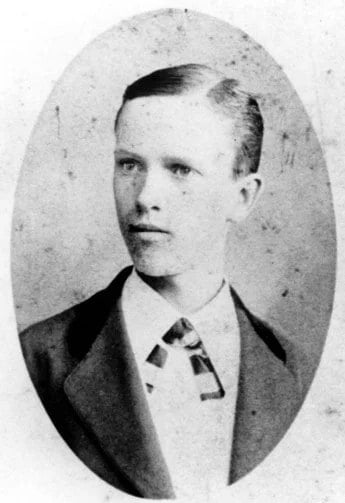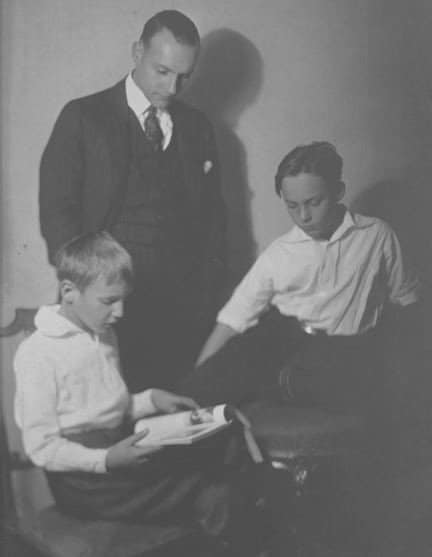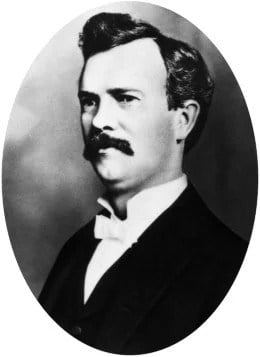Who Was William S. Burroughs?
William S. Burroughs was an American inventor. He was born in Rochester, NY on January 28, 1857. However, some sources claim that the boy who later became a renowned inventor was born in 1855 or even earlier than that. Whether the claims are true or not, William was born around that time. Besides, although the sources say different dates, they do not differ on the place where William was born.
Early Life
William’s father, Edmund Burroughs was a mechanic, and his mother, Ellen Julia was a homemaker. Edmund so admired William Henry Seward, the then New York governor and famous abolitionist that he named his son after him. The Edmunds had four children (three boys and a girl). William’s brother, Charles, who was older than him was born in 1852.
Quick Facts
- Full Name
- William Seward Burroughs
- Birth
- January 28, 1857
- Death
- September 14, 1898
- Net Worth
- NA
- Children
- Jennie (1880), Mortimer Perry (1885), Horace Seward (1886), Helen (1892)
- Nationality
- American
- Place of Birth
- Rochester, NY
- Fields of Expertise
- [“Inventor”]
- Contributions
- Invented the Adding Machine
The sister, Anna, who was born in 1855 later studied to become a music teacher. William’s younger brother, James, who was born in 1861, was a printer. Later he ventured into the automobile business that had started to emerge during his day.
Although born in Rochester, William’s family later moved to live in Lowell. It appears that the environment of this area impressed young William and his elder brother Charles. At one point, Charles said of his younger brother how he used to spend a lot of time in his father’s workshop.
The workshop was built inside a woodshed, providing a conducive environment for the young man. “William is a stubborn boy,” Edmund once spoke of his son. Like his father, William showed immense love for tools from a tender age.
Even without any knowledge, William used to build things from nowhere. He was fascinated with things like machines and nature. Without prior instruction or guidance, young William could come up with something to show his siblings and parents.
But even with this love and passion for things like machines, Charles continued to say that his younger brother was distanced from things young boys loved. William did not involve himself with things that young boys his age did – things that required physical strength.
We do not have much information regarding William S. Burroughs’s elementary education. But we do know something about his secondary education and life after high school.
It was in the autumn of 1871 that William S. Burroughs enrolled at Auburn High School. A year later, William attended a Mathematical Shortcuts lecture expecting to find information on how to handle basic arithmetic. However, the lecture was more than that. The speaker talked about some of the things the young mind didn’t think of.
After the lecture, the young William S. Burroughs left the room discouraged and encouraged in equal measures. For weeks, he did not find peace, he stopped eating properly and felt hopeless. However, at the back of his mind, he told himself, “One day, when I grow up and have my own money and resources, I will make an adding machine that will be able to solve the current arithmetic problems. The machine will be something big, something every person alive would want to know.”
Career
After spending 3 years in high school, it was time for William S. Burroughs to leave. In 1873 William’s found employment as a messenger at Auburn Post Office. He also worked as a planer at a local lumberyard.
After working in the post office and lumberyard for some time, William shifted to the bank. At the Cayuga County National Bank, William became a discount clerk and worked there for several years.
While still at the Cayuga County National Bank, William contracted tuberculosis which had an adverse effect on his health and he could no longer shoulder the workload.

©History-Computer.com/History Computer Staff
After quitting formal employment he started a small manufacturing company. Unfortunately, he lost all his savings on the small manufacturing business and could no longer sustain himself. Due to TB, he was getting physically weaker every day, his doctors advised him to relocate to a warmer place.
Following his doctors’ advice, William S. Burroughs relocated to Saint Louis, Missouri in the last quarter of 1880 along with his wife, Ida, whom he had married a year earlier. His father accompanied them too. The two men created a perfect partnership, and after settling they started a small workshop. They started making metal and wooden models, and steam gauge testing apparatus.
The workshop William and Edmund built lasted over forty years. Some of the big manufacturing companies at the time were impressed with what William and his father created.
The Future Great Manufacturing Company hired him. William also worked at the Hall & Brown Co. The company was famed for designing and manufacturing woodworking machinery. Generally, William worked with his father at their workshop and at the other companies for three years.
In these three years, William gained practical experience, in terms of wood-working machinery operation and manufacture.
However, in all these years, his father didn’t know that his son had a burning passion for theoretical mechanics. Thankfully, the experience at the workshop and the income from two companies enabled him to get his hands on various apparatus. Also, he got the chance to meet with dozens of inventors.
What Did William S. Burroughs Invent?
Adding/Calculating Machine
With the number of inventors visiting their workshop increasing, William’s ideas to create the adding machine started to take hold. Some of the inventors William met and talked with on a one-on-one basis include Richard Mitchell Scruggs, Thomas Metcalfe, and Joseph Boyer. The latter became one of the important persons who played a major role in William’s commercial success of his adding machine.
Although the climate at St. Louis was more favorable for his TB condition, according to William, St. Louis was not a good place for actualizing his obsession. The high humidity in St. Louis made his drawings expand and shrink, which was not al all conductive.
Within no time, William found a temporary solution to his problem — creating the design works on a metal plate. In 1884, William S. Burroughs had a sketch of his working machine. A year later, he filed for a patent from the government.
William S. Burroughs: Marriage, Divorce, Children, and Personal Life
Net Worth
No information is available about William S. Burroughs’s net worth.
Marriage
On July 30, 1879, William S. Burroughs married Ida E. Selover in Groton, New York, they had four children, two girls and two boys. William S. Burroughs was so obsessed with his inventions to the point that he could not remember to change his clothes. He was also cold and remote towards his children. He would seldom spend time with them.
He spent most of his time in his workshop and at home, indulging in drinking alcohol. He also had an unpredictable temperament that was made worse by drinking. One day, while in his workshop, he became furious with the machines to the point where he opened a window and threw all the machines and tools out, which got broken beyond repair.
In the mid-1890s, William S. Burroughs’s business was booming, however, his health and that of his wife deteriorated. In 1896, William S. Burroughs resigned from his company. He took his wife and the two moved to Citronelle, Alabama hoping that the change in climate would help the couple’s health to improve.
Unfortunately, Ida died a few days after they arrived in Alabama. A few days later, William S. Burroughs remarried, to Nina F. Keltner, a family friend who served for a long time as his children’s nurse. After remarrying, William S. Burroughs didn’t live long.
Children
William and Ida were blessed with four children: Jennie (born 1880), Mortimer Perry (1885–1965), Horace Seward (1886-1915), and Helen (born 1892).
Mortimer (Mote) Perry became a businessman and ran an antique shop in Palm Beach for some time. Mortimer’s second son (see the upper family photo) was named in honor of his inventor grandfather. William Seward Burroughs II (1914-1997) went on to become a notable figure in American letters in the twentieth century as an avant-garde novelist and artist.
The second son of William Burroughs, Horace Seward, became addicted to drugs (morphine), and ended his life tragically only 29 years old, from a self-inflicted wound (he cut his vein, crazed by the inability to obtain morphine).

©Unknown author / public domain – Original
Death
William S. Burroughs died in Citronelle, AL on September 14, 1898, aged 41. The inventor was interred in Bellefontaine Cemetery in Missouri. Nina, the widow, was left in charge of the children and the big estate William S. Burroughs left behind.
The image featured at the top of this post is ©Unknown author / public domain – License / Original


